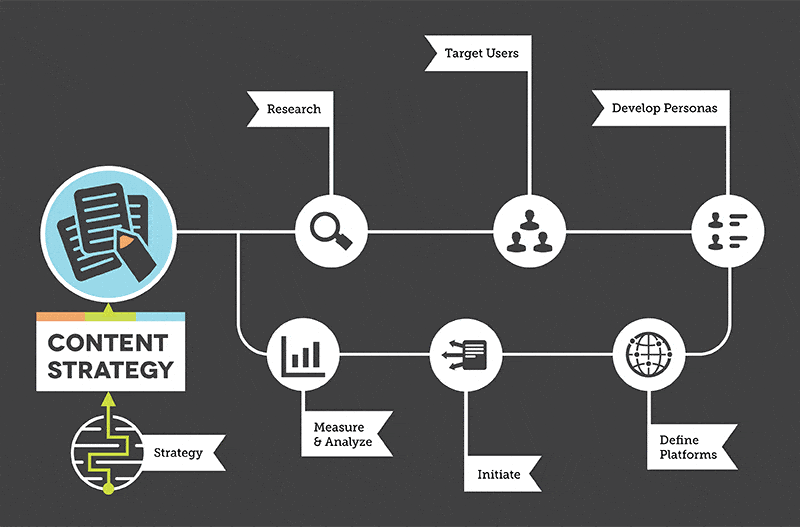We will look at why and how does content marketing and growth hacking can be applied for Small B2B, B2C and other Small Startups.
A Complete Research and Case Study
We will look at why and how does content marketing and growth hacking can be applied for Small B2B, B2C Businesses and other Small Startups.
- why does Small business do content marketing and all?
- what statistics and figures that we found that drive our primary marketing?
- Budget requirement details for content marketing?
And second, we’ll go through each stage of the content marketing model that we use in our business and each step will not only give you a high-level overview but we’ll also, dig into the details of specific products we use and how we wire them together and then we will talk about conclusions and next steps.
Here we go!

why content marketing?
In over the last 2 years I have probably spoken with 100 businesses and almost universally they are experiencing a fundamental shift in how their business operates B2B companies are feeling the effects of this massive shift. You know either positively but mostly negatively. And what is happening it seems is that because of the Internet and easy access to information customers are now armed with a ton more knowledge and collective experiences of the market and they can use that information to make very intelligent decisions because of this shift. What we are seeing is that they are engaging much further down the buying path, at a point where they have basically already almost decided. They understand the products. They understand what features they want, and they understand mostly how much they will be paying.
In fact, there is a study that was fantastically related to this. It said that 57% of the typical purchase decision is made before a customer talks to a supplier. So, if you need any justification for why you should be doing content marketing, it is this what used to be done by your sales guy. Educating him on your business is unique value and why it is important is now primarily done by the Internet and done by both you and your competitors. So, you are producing content that engages your prospects to educate them on what is important and hopefully unique about you or you will have to play based on the criteria set by somebody else.
In that case and the best case, you are selling is a commodity based on price and worst case you probably do not have a seat at the table. So, Content Marketing is for many B2B businesses the primary method that they should target.
7 Reasons Why Content Marketing Is Important for Small Businesses

Influence:
It has several secondary benefits including one influence having chatter about your products increases the probability that they will be bought. There was an excellent study for them in our shop about European online retailers, and over 78 percent of those retailers thought conversations in the market influenced what people purchase
Close Rate:
Second close rate. According to HubSpot, admittedly biased that organic search leads have a 14.6% close rate on average where outbound leads have a 1.7% close rate. But if you think about it. It makes sense. You attract people that naturally have more interest in your unique value versus hitting the market randomly, which might or might not be a perfect match for your capabilities.
Trends:
Most organizations are at least playing with Content Marketing at this point. But the trend will only continue.
Costs:

Number Four costs. Companies that are spending over 50 percent of their lead generation on inbound marketing or Content Marketing Report at a significantly lower cost. So, what this boils down to is that the way people buy is changing content marketing is your response to that change as a business and you can either take part in it or you will probably lose out.
More Traffic:
We have seen just to give you direct evidence from us in the last 60 days we have seen over a 275% increase in our league volume. That is a mix of PPC and organic but drove the content driven primarily and it is you know dramatic for our business.

Higher Conversion:
The second piece to that is that it converts. So, we are paying for this traffic to get here. And through efforts and time and resources and content writing, but we convert it, our conversion rates are as high as 30% on some of our landing pages and everything is above 10 percent. So, it is going really well.
Lower Costs:
Then the other thing I would say is that customers are well-educated and far down the by cycle. So, the cost of engagement once we engage with the customer is significantly lower. So, we need less sales staff to handle the leads we are getting because the leaves have high quality and So, between more volume and lower cost and super high conversion rates and simpler by cycle’s Content Marketing has been a slam dunk for us. And I am sure we could do it better.
Here is what we are doing at Digital Clerks exactly:
Within the lab we use of 4 step content marketing process. These are the steps we will go through in detail, the 4 steps are
- create interesting, relevant content
- publish that content optimizing it for conversion.
- Get your content in front of your audience.
- learn and improve So, you can do the process, much better in next time.
So, sometimes I think Analogies are useful. So, let us use one here. Content Marketing is basically like fishing. A person who is a fisherman catches fish. And so, a content marketer captures customers and finding convergence and getting those people to take action that you want them to take. So, in step one creating interesting, relevant content, can you guess what it is in the fishing analogy.
Create interesting and relevant content:

Content is your bait in the fishing analogy Here
Who is your audience:
It is the thing you put out there to bring in the customer to engage customer So, to understand just like fresh fish respond to different bait, different audiences respond to different content. And so, you must know who your audience is that is critically important.
We do persona is and that is a straightforward thing. I will not go into too much detail about it here, but we just try to look at our audience and say okay who are the people that ultimately buy. And if you have a lot of buying going on your site already are you a big company and you have got a lot of history, you can use that and reverse engineer who your buyers are. And if you are starting out and you are just getting a look at your playbook or look at what you are using to generate your business model and look at those personas but understanding who your audience is, is critically important because the audience needs to take the bait.
What type of content are they interested in?
Second, once you understand who your audience is, you need to understand what they are interested in. Being that we are search and socially focused we are more focused on keywords and using math to say what they are interested in what topics does this audience find interesting and talk about. And so, we generate a list of keywords and we use those keywords for our content marketing efforts.
How They want the content to be delivered in front of them:
Then 3 Once we have the people and we have the keywords; we want to look at how they are delivered. Are they more interested in Infographics or are they more responsive to video or are they more interested in text long body and short body blogs white papers e-books would podcast work So, working out how the content gets delivered is important because ultimately again content is your bait and you want to deliver that bait how your audience wants. So, once you have kind of got that and you produce content, what we do is use a 70-20-10 rule.
- 70% is about what your audience should do, not how to do much but more and what you should do kind of content. We find that that works well.
- 20% is provocative content is aggressive content it provokes action out of someone. This is where you pick fights, basically.
- 10% is kind of the off the wall stuff you would not do normally you do not think would work but maybe it might work, and you want to see if that does. Because sometimes those will be your best performing and So, to summarize content is your bait. Understanding who your audience is, what they are interested in and how they want it is key So, you can make the content that the customers want to have delivered So, they will take the bait. So, let us fill in your audience more and make sure you make your bait irresistible.
Dig into this a little more just to talk about mindsets. I think it is important for the process. Speaking specifically about B2B lead generation, what we found from research that I mentioned earlier was that inside companies there are different types of people. No real surprise there. But the interesting thing was that the people you target had different behaviours than the classical sales and marketing process.
So, the research talks about three types of people you want to target the

- Go-Getters
- The Teachers, and
- The Sceptics of Go-Getters
Or people that do teachers are people that teach and skeptics or people that try. And so, what we found in this practice is if you match your content to those three types of people it resonates strongly with the market. In an example, baiting the hook with interesting stats and facts and then talking about what you should do given those facts is really the method it leads. You are using data and you are driving insight into the organization, and you are helping that organization by coaching them on what they should be doing. And that brings your perspective into the process. That is the content that is the 70% stuff it is the stuff that you get out there regularly you deliver it and it helps position you for the buyer who’s making that decision and helps them set criteria that are to your benefit and that is the way we do it. And that is how we recommend doing.
Turn a Great Idea into a Lot of Content:

So, you have got some ideas, but how do you turn a great idea into a lot of content. Well, the idea there that we built out is being built to stack. Basically, the idea is to create less but better content and then stack using parts over and repeatedly to drive maximum value. So, for example, say you are building an e-book with an e-book you can build a landing page for it generate leads with it split it up into sections and write blog posts about each section. Or even use the entire thing as a blog post, record a video with it and post it to your YouTube channel, and you can produce a PowerPoint version of that which you can share on Slide share. You can give webinars about it which you can not only invite people to but you can also, record and then use that as content to slice up. You can email parts of it to your list. You can build a simple graphic version of the content where you share with your blog post socially and share it with other sites and get it going back to you.
You can use these ideas even in the product content as part of a research process. You can interview interesting and relevant people for the content you are producing that not only can you use their information to inform and guide your book which you can use snippets of the video and posted to your YouTube channel or in blog posts and you can use that same material after you release that e-book as promotional materials that go along with the e-book. So, I think you get the idea that if you build more substantial pieces, you can get meaningful results of industry knowledge. You can show them what the data says about how they should do things and you will build content that you can stack and stack and stack.
Content Management Process
So, how do you manage to build your great content? Sometimes people have a hard time figuring out the management process and although we use Trello and we use Trello a lot and we love it. This is a simplified version of the board and I just wanted to give you a sense of what our Trello board looks like for content creation. Basically, we have got lists of each stage in a process and if something moves from left to right it gets more and more formalized. So, what we do is we have a list on the left where we just gather ideas where anybody can post ideas into the process. And we regularly have a content meeting where we figure out what we will talk about next, and we work it up in the next and put those in priority order. So, each person can work on one piece at a time and we do this so, that people get their content out by producing one brilliant piece of content. The primary author does interviews in both stackable pieces of content around their supporting assets and that after we go through a review process to not only find bugs but also, find additional opportunities to stack. We get ready to publish; we complete it and then we publish it and then we go about promoting it. That is our general process. So, this is the way we figure out what we will do, and then we use those calendar functions so, you can see when the pieces of content will be delivered and something else, we do. Since I have taken this screenshot.
It is up here is that we add a column for events so, we can see the events that all lined up with our content so, we can get the bonus of matching the content to the dialogue that is happening around interesting events. So, if there is a trade show coming up or if there is a holiday coming up, we can map our content to those themes that are happening in society and get some uplift from that. And that is how we come up with. And we manage the content that we are producing.
So, up to this point, we have built great bait. We have learned to figure out who our audiences figure out are key words build a calendar of great content identify assets to make our content build it and gather stacking material so, we can set it up for some great exposure. And so, once we have done that, we have to publish it optimizing for conversion in our analogy your platforms for publishing are essentially your rod and reel. The things you use with the bait to catch your fish. So, for publishing, there is four things that we are dealing with.
Process of Publishing Your Content for Maximum Conversion Rate
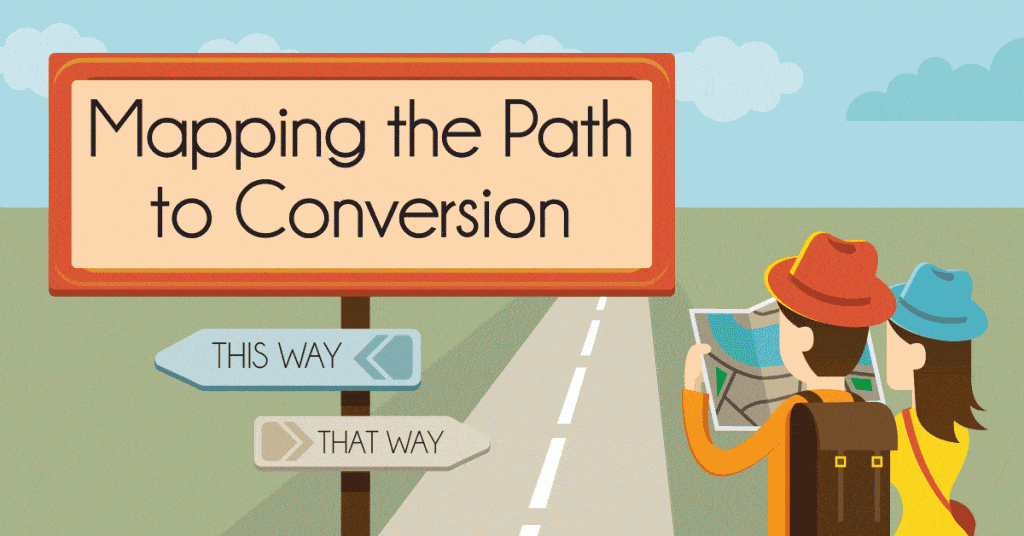
Publishing platform that we used to publish our content. Basically, a blog. We must have landing pages that we make offers on. We have to take the data from those landing pages and put it into a CRM system So, we can manage those leads and we have to have a marketing automation system that implements leads scoring and nurturing information So, we can continually supply information to our prospects. So, let us explain tactically how this all works together to get done what we need to get done.
The Things We Need During the Content Publishing Process
- Publishing Platforms
- Landing Pages
- CRM System
- Marketing Automation Tools
How We Find Those Audience

Now, we have somebody who is interested in our content out there, and we’ll talk about how we find those people in a minute. They hear about our article and it is interesting to them and so, they click on the link and come to our site in our example. We wanted to promote a cause related to animal shelters. So, what we came up with was a blog article about how to get a date with a girl that is out of your league using the offer of a date with a difference. So, you have a date, but the date is supporting a non-profit that deals with animals. Most people are dog lovers, cat lovers, so, it is a good fit. And in talking with people about this content example, this worked well. If you notice, there is a state change in there. People want to get a date and they don’t know how to get it. So, we give them a strategy for doing it. We teach them how to do it and we make it effortless for them to act now. And so, that as a process is basically what we do and we do this over and over and repeatedly and it produces leads, platforms and efforts. They are how you bring your fish in.
Content Marketing Platforms
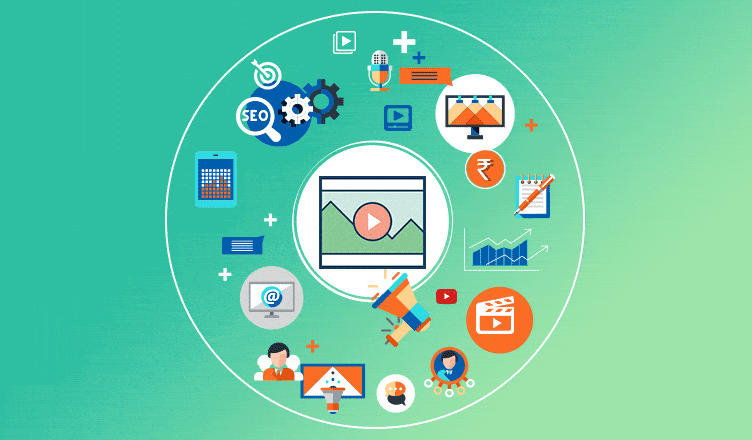
So, for content marketing specifically, the platforms we use today are WordPress we use WordPress for our blog. It doesn’t cost us anything. And I’ll include a summary of all the cost across the entire system at the end so, you get an idea of how much the total dollars are that we are spending on infrastructure we use Unbounce for landing pages. I am bound for the landing page platform. We use this today because we can generate a landing page without having no coders involved. That looks good. So, literally anybody in the company can build and test the landing page. The other thing it does is it gives you the ability to split test pages and gives you the conversion rates for those pages. So, it makes it idiot simple to have the data that you need to decide and improve conversion. It also, integrates well with Salesforce which is our CRM system and then we take that same data and we push it a lever where it is light from the marketing automation perspective and we’ll probably change a higher-level platform so, that basically we have drip campaigns that are associated with each individual campaign. We can start feeding them information which we think is highly relevant to them.
The first two steps of the process to review the right interesting content. We link it offers we map those offers to a CRM and we have a marketing automation platform that provides ongoing data around those offers. And those are the tools we used to do it. Next, we’ll be transitioning to our stacks of content in our channels and figure out how to make it easy to get the word out.
Getting Your Content in Front of Your Audience
The third step in our model is getting your content in front of your audience. This is an area where I think most content marketers fail because a lot of the vendors out there talk about content marketing as an attraction mechanism that you just sit around being pretty and wait for the leads to happen. If you have a brilliant piece of content and you don’t promote it, you are definitely not getting all you can out of that content. Best case and much more likely it is like a book you stick in a library on an island with no people on it. It will never get read. You have got to get out there and you have got to promote it and you have got to let people know what content you have available. But just don’t take my word for it.
John D. Rockefeller well known for how connected he was. And part of his ability to connect I think came from this quote “next to doing the right thing, the most important thing you could do is let people know you are doing the right thing”
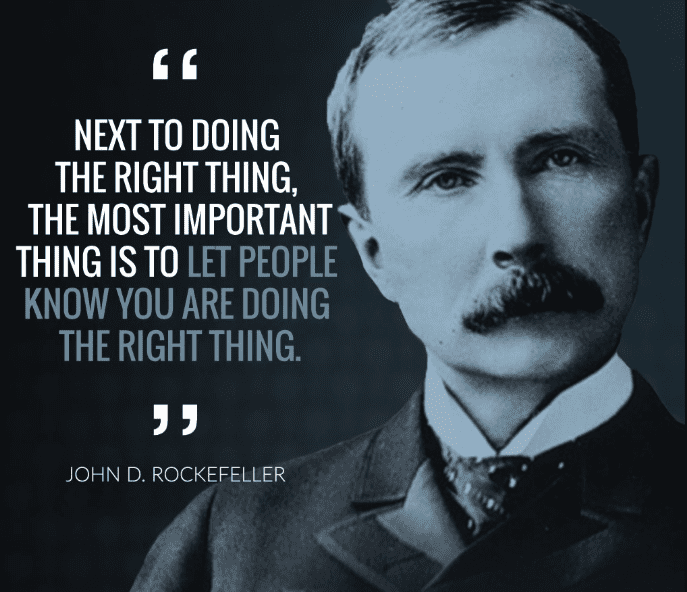
Let people know what is available. Let people know what you are doing. Otherwise, they will not find it and they will not give you the credit for it or the traffic. So, give them great content. Teach them how to do what your products and solutions do but also, make sure that people know about you and know about all the solutions you provide. So, giving them significant information is only one half of the puzzle. The other side to this is you have got to let people know that you have got significant information for them. And that is what we will talk about next.
Maximize Your Content Reach
Back to the analogy that we had for the places and the people you want your content promoted or your fishing holes, it is the places that your audience will naturally go, particularly when they are interested or talking about the topics interesting to you. And so, to promote wellness, you need to know three key things.
How You are Publishing your Content?
How You Are Publishing Your Content?
One, how do you publish content. Minimizing friction and maximizing reach this doing the publishing in a way that you are not negatively affecting yourself from a client’s perspective.
What Channels Are You Using to Publish Your Content?
Second, you need to look at your channel and understand where they are talking about your topics the most.
Finding Influencers and Platforms

Third, you need to understand what sites and what people are influencing the conversation the most. So, for example, if you have a piece of content about getting dates you put it on your Web site in a way that causes it to naturally rank you find the channels where people are talking about dating. And you find the sites and people influential for dating, and you leverage that information to get the word out about your magnificent piece of content. So, let us review each one of those steps, starting with minimizing friction and maximizing reach.
Minimizing friction and maximizing reach really comes down to four key activities, and this can be highly automated. There are plenty of tools out there that you can use to do this. Obviously, we think ours is better, but anybody can do this with it with any piece of content even manually with enough time and effort.
Real-time Update of content performance:
First, you need to have a way to know when things go wrong. Websites change all the time. Links go bad external sites go bad your response time slows down or you are missing a piece of content someone fat fingers or twitter handle. Literally, there’re many things that can go wrong because of this, we really believe that having an automated check of your content is critical. You need to know when things go wrong so, you can fix them. And when it happens.
You should be able to respond in proper time to fix issues:

The second part you need to fix those problems fast. So, there it is about making sure that you can communicate quickly, and you are able to make sure that people know that they are the ones responsible for getting things fixed. Those two are basic site optimization basically SEO type things.
Clean-up Irrelevant Old content from your website:

The third is a good content marketer understands that sometimes it is best to take your content off your site. And so, going to your site and making sure that your sites cleaned up of old content legacy content the stuff that is no longer relevant or out of date and take those pieces and you URLs redirect them to places that have newer fresher content is an important part of your overall minimizing friction and maximizing reach. It has to be done, and it is really about simplicity, it is about clarification. It is about making sure that your business, your site itself, is easy to do business with. If I am frustrated when I am visiting your web site I will leave and then you will not deliver the content you wanted to deliver to me.
Optimizing Content to Increase Natural Reach:
And So, lastly the fourth is optimize it makes it easy to make or the content easy to find. Make sure it is organized well and structured well. Doing So, will help maximize your natural reach, and it will keep your customers on your site and keep them reading your content. I usually think of it this way, as I might have said just a second ago is my site, easy to do business with. If so, then you can move on to discovering your channels of influencers.
Find the right channels and influencers

Our approach starts with listening every day as we gather all the mentions of all the keywords we track on a project and there are several ways to do this. And you don’t need a nomination platform listen to topics listen across twitter, Facebook, Instagram, news sites, blogs and forums gather up any time you see a mention of your topic and where that mention came from and put them all in a mention list. Once we have that list we will do some things with it.
Find Talkers Place:
First, what we do is gather a person place list of talkers. So, what are the sites and people that are talking on twitter today and gather up that list. Once we had that list we enrich it with data.
For example, for Websites we use that needed from the Moz, Ahrefs we use their domain authority metric primarily for this. There are other channels like Twitter and Facebook, and you can use something like Buffer, Tweriod etc for those. But what your goal is really to figure out the people who are most influential. And if you have a potential way of connecting with those individuals with your content Ideally, the people in places have authority and influence in the market. Once you have that contact list you can go want to enrich it further by finding additional contact information So, you can reach out to them.
Listening and finding out the Trends:

Second, listening also provides education about what people want. So, looking across channels on Facebook twitter news forums, etc. You can take the thing they link to and count the types of assets that people are linking to. From this, you can get a wonderful sense of what kind of content people want by channel. Then as you build your stack content, you will want to make sure you are building content that matches the way your audience likes to consume. Distributing your content through those appropriate channels.
We mentioned the 70-20-10 rule before this can apply here.
- You can build 70% of your content as an ideal match for the content type share to your audience.
- 20%-10% becomes the materials that don’t align well with your audience preferred content types.
- last, out of our mentioned list, we gather secondary topics and hashtags.
We do this for three key reasons
- Having a list of hashtags enables us to connect our content to those hashtags you really want to do this as it provides significant uplift relative to just straight tweets.
- Secondary topics which are essentially we associate what other keywords with the keywords we have provided us additional ways to connect our content to other conversations expanding our reach. So, we want to do that and find those.
- The last one, secondary topics are also, great follow-ups for content. Typically blog posts and often they will become primary terms that we track whether you have got a system that does this automatically for you. There are several automation tools available or you can hire Professional Content Marketing Experts.
Engaging with Influencers on Different Relevant Platforms:
Understanding it and then doing the stuff on the right side, engaging or influencers matching content to the market and adding secondary topics and hashtags. Those are the things that are going to really move the needle and are critically important actions to producing results. So, the first time you do this, it will be hard. But once you do it and you exhaust your stack it will get easier, but you will improve much faster if you know what didn’t work. And that is what we will talk about next in the methods you used to learn and improve.

Keep a Details Track for Content Analytics:
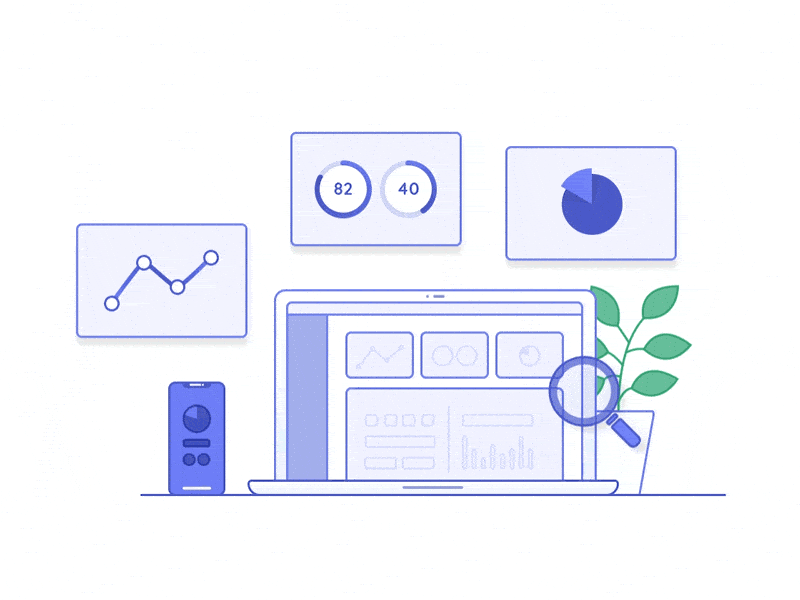
Having the right analytics is key to all this because if you don’t or can’t see your environment, you can’t really see what is happening. And that means it is hard to adjust on the fly or to learn what you are doing wrong. And if you don’t know what you are doing wrong, you will waste a lot of time on money. And you will probably feel like Content Marketing doesn’t work. So, this metrics this learning ability is basically your fish finders. There is a time when you go, and you sit there and finish and there is a time when you say there are no fish here and you move to another hall. So, there are a few areas that you need to look at when you are gathering metrics
- Web Analytics
- User Analytics
- Experiences and Behaviour
- Revenue Optimization
Different stages need different metrics I should say here that depending on the size of your organization and how your content produced different companies might have different metrics. But I thought I would give you specific examples of what we use today for creating interesting and relevant content.
The things we look at are one content age:
- How long is our content available?
- When does it need to be changed?
- Is it relevant?
- Is it still getting traffic content?
Content Age is a metric that you would get out of a system that you use that contents inventory. there are independent platforms that you can get out there that will enable you to content inventories for yourself.
Visits:
Is the site for getting traffic. If it is not getting traffic any more it is probably not worth keeping on your site. So, the best thing to do is redirect that page to a fresher piece of content.
Shares:

This is our quality metric. Is this content getting shared with your content not being shared? It is probably not great content, and your content quality needs to go up. You can also, look at what content is being shared So, you know what content you should spend more time on. For publishing content, we look at several metrics, including one overall quality score by checking your Web site. We want to make sure that that our general quality is going up our speed is going up. We are reducing errors or making the site easier to do business with.
page type ratios:
We use this to look primarily at how our Web sites on page structure are in terms of its links. We want more landing pages and more conversion pages and less bridge pages and where possible we want to eliminate siphoned and pages as those pages have a tendency to take customers off of our site tracking this over time will give you a sense of whether your website that is wrapped around your content is helping you with the ability of that of that content to convert
surf breaks:
While it is becoming less relevant. You still should know where you stack up on the search results. If you have a page that doesn’t rank for anything it is probably not going to give you any search traffic. So, knowing where you rank and making sure that you understand that when you publish content, what happens with that rank is important. Because it is an indicator of what Google thinks your quality is.
soft fiction:
Based on all of this are we getting conversions about what is happening as users visit our pages. Is there friction? This is what we use things like KISS metrics or inspection for to make sure we haven’t introduced fusion or friction for our visitors. Those tools help us see what the data might not tell us So, we can make better websites and deliver a better user experience. For getting your content in front of your audience we look for
authority and relevance metrics:
Only attraction or engagement in proper time and looks at how much your efforts are improving your authority for your target keywords and relevance for those keywords. Understanding whether you are making progress on these items is important to gaining visibility.
Follows and likes:

If you are not publishing in the right place where there is no fish you won’t get likes and follows to tracking this is an important metric to understand that you are learning and improving your ability to find where your customers are.
Engagement:
Again, an almost specific metric, but your team should track it in some form. Are you doing work or are you tweeting? Are you e-mailing influencers? Understand that if you are not taking any action, you are probably not going to get any results. And So, having metrics that you are using to track your ability to engage or whether you are engaging is important in this process because if you don’t take action and you don’t track the number of tweets and posts and shares in e-mails on a project by project basis you will have a hard time correlating your external life for the results you achieve. And then for learning and improving the things we look for are our ROI.
ROI:

It is often hard from operatives to quantify what the ROI is on campaigns, but if we build campaigns to generate leads and those leads turn into sales it becomes an extremely hard metric. I believe that we should focus most of our time on these efforts, as branding work will come when you have got visibility and traffic and leads. If you just pick your brand of there, I think it is hard to quantify the 80-20 rule applies here.
Sentiment:
It is more than just tracking your ROI, though it is understanding how people feel about you and about your space that is important. So, we track mentioned sentiment to make sure that not only are the leads coming in but are we improving the sentiment of how people talk about us or if it is positive. Does it stay high? This can be an early warning system if things go wrong. So, it is important to watch and then share, given the entire volume of conversational mentions related to all our topics.
- What share of voice do we have?
- What share our competitors have?
Whatever you do your competitors will react. So, I understand whether you are gaining share in terms of mentions or losing share is important. It can be a warning signal that your content isn’t the quality that it needs to be. And So, those of the metrics we look at and use, there’re some optimizations or tweaks here and there. But we think they are valid for most businesses large or small.
Tools to Track Your Content Analytics:
Google Analytics:

This specific solution we put in place for analytics our Google Analytics. Most people have this on their site already, and it is free. You can export data So; you can merge that needed together and excel with Google Analytics. We can track page views of visit is bounce rates, data related to incoming traffic.
kiss metrics
user analytics:
We use kiss metrics. And what this does is it allows us to track user behaviour instead of page views. So, we have X number of visitors and for each individual visitor we can track where they go what they do whether they filled out forms whether they downloaded white papers how long they were on pages of that thing. And So, it becomes critically important because it gets away from the idea pages and it gets to their behaviour and their actions, and those actions are the ones that drive results. So, it is very important.
Experiences and behaviour:
Again, we use KISS metrics here and inspect a great user experience. The two combined really give us a solid feel for what is happening and where the friction points are. For example, if people drop out at a certain point you can use inspection to see what is happening. It frustrated them. They might click on something that they think has a link, and it is not. And within Inspectlet you can often tell that.
C.R.O:
We use visual Web site optimizer for this on pages besides our and downs pages we test various headlines and subtitles and Dahlia’s bullets and calls to action. So, we know that our Web site is decreasing balances and increasing conversions because better experiences convert better messages can work better. And this is basically the way we test those. So, in our tooling list we have
- GA-Google Analytics
- kiss metrics
- Inspectlet
- Digital website optimizer
Conclusion:

That is our process from beginning. And to summarize in 3 Simple Steps of Content Creation and Content Marketing.
- Create interesting, relevant content by figuring out who your users are and building content to match them.
- Publish that content. Optimizing it for conversion and making sure that you are publishing it in a way that frankly doesn’t suck.
- We get out of the building and we promote the content and get the content in front of our audiences and then we take all this data and the information that we learn So, we can improve over time and improve our things and better and better. And that is what we did.
The platforms and services I’ve talked about we listed here with aggregate pricing that shows it is about a 1000 bucks a month for most people we are dealing with, that is a small percentage of the amount they are spending on pay per click. And So, you can get into this and have a comprehensive solution and execute on content marketing strategy with your team inexpensively. So, we hope that this has been helpful.
If you want to learn more about our list of links for additional learning, you can review some related sources that helped to build our thinking for our method. And as the founder of Digital Clerks, I’d like to ask you to come and check out at www.digitalclerk.com Not only will it be an example of what we are doing today that you didn’t learn about how we automate a lot of this So, you and your team can focus on building great content and great relationships. We not only stuff like this but we have a lot of great services check through our website for details. Check out our other Relevant articles that you can see at the bottom. There is a lot to learn there. Check it out. Thanks again for your time. And if you have questions, please reach out and ask [email protected]


